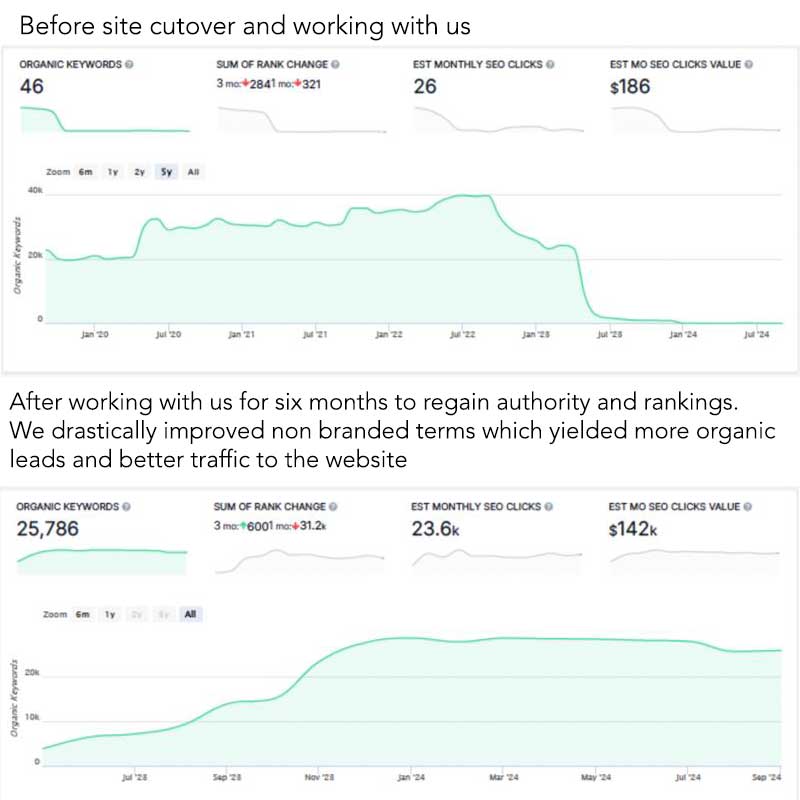Understanding your competition is one of the most overlooked opportunities in digital marketing. Too often, businesses focus solely on their own keyword rankings and content performance, without realizing how much insight is available by studying who’s already winning in the search results. That’s where smart SEO competitor analysis techniques come into play.
Whether you’re trying to increase organic traffic, recover from a dip in rankings, or dominate a niche, a well-executed competitor analysis gives you the blueprint to do it faster and more efficiently. You’re not guessing. You’re learning from the real-world results your competitors are already achieving.
Here’s how I approach a SEO competitor analysis with clients who want to build winning strategies, and how you can do the same.
Why Competitor SEO Analysis Matters
Search engines don’t just rank your website in a vacuum, they compare it against every other page in your niche. That means if your competitors are outranking you, they’re doing something right. It could be content depth, page speed, backlink profiles, or domain authority. The key is to identify those signals and use them to your advantage.
An effective SEO competitor analysis techniques help you:
- Uncover gaps in your content strategy
- Identify new keyword opportunities
- Learn how to structure and format content
- Benchmark technical performance
- Find link-building opportunities you might be missing
By reverse engineering what’s working for your competitors, you build a roadmap that’s based on data—not assumptions.

Step 1: Identify Your True SEO Competitors
Your business competitors aren’t always the same as your SEO competitors. You might be going head-to-head with an entirely different set of sites in the search engine results pages (SERPs). That’s why it’s important to identify who is actually ranking for the keywords you care about.
Start by searching your core keywords and make a list of the domains consistently appearing on page one. Use tools like:
- SEMrush or Ahrefs to run keyword gap analyses
- Google Search Console to spot domains sharing impressions
- Screaming Frog for technical site crawls of competitors
You’re not just looking for competitors by brand—you’re analyzing them by topical authority and keyword footprint.
Step 2: Conduct a Keyword Gap Analysis
One of the most useful SEO competitor analysis techniques is the keyword gap analysis. It shows you which keywords your competitors rank for that you don’t. That opens the door to quick wins and long-term content planning.
To run a keyword gap analysis:
- Select 2–3 competitors from your research
- Use a tool like Ahrefs’ “Content Gap” or SEMrush’s “Keyword Gap”
- Filter for keywords with mid-to-high search volume and low difficulty
- Prioritize keywords that are topically relevant to your offerings
This doesn’t just inform blog ideas, it uncovers opportunities to build landing pages, resource hubs, or even new product content based on real demand.
Step 3: Analyze On-Page Content Structure
Next, review how your competitors are structuring their top-ranking content. Pay attention to things like:
- Title tags and meta descriptions
- H1/H2 formatting and keyword usage
- Internal linking patterns
- Word count and content depth
- Use of visuals and schema markup
This is where many brands miss out. It’s not about copying, it’s about understanding what’s resonating with both users and search engines.
If your competitor’s blog on “commercial solar panel ROI” is 2,000 words long, includes a comparison chart, and links to a downloadable calculator, your 800-word post with no visuals probably won’t cut it.
Applying these SEO competitor analysis techniques can help you design content that’s not only optimized but also more valuable and more engaging.
Step 4: Evaluate Backlink Profiles
Backlinks are still a major ranking factor. But not all backlinks are created equal. Understanding where your competitors are getting their links from—and why—can help you shape your own link-building strategy.
Use a backlink analysis tool to:
- Identify domains linking to your competitors but not you
- Group links by type (e.g., guest posts, press mentions, directories)
- Check anchor text diversity
- Spot patterns in referral domains by industry or authority
Then, use that data to create a hit list of link targets. Prioritize high-authority domains that repeatedly show up across multiple competitors. Reach out with value-driven pitches, or build assets (like infographics or research posts) that naturally attract those kinds of links.
Backlink audits are among the most powerful SEO competitor analysis techniques when your goal is to improve domain authority and rank for competitive terms.
From Traffic Loss to SEO Comeback: A Before-and-After Breakdown
Rebranding without a strong SEO plan caused this client’s search rankings to tank. We helped realign their content, resolve structural issues, and drive qualified traffic again.
Explore the full SEO recovery case study HERE

Step 5: Benchmark Technical SEO Performance
Strong content won’t win if your site’s technical foundation is weak. That’s why technical benchmarking is essential.
Compare your site to competitors across:
- Page speed and Core Web Vitals
- Mobile usability
- Indexation and crawl health
- Structured data usage
- Internal linking and crawl depth
You can run site audits on your own properties and on competitors using tools like:
- Google Lighthouse
- Screaming Frog
- Sitebulb
- Ahrefs’ Site Audit
When your site outperforms competitors in technical areas, your content has a stronger chance of ranking, especially when all other things are equal.
Step 6: Understand SERP Features and Intent
Not all page-one positions are created equal. Increasingly, Google is showing featured snippets, People Also Ask boxes, video results, and local map packs. One of the more advanced SEO competitor analysis techniques is understanding how competitors are earning these SERP features.
Ask:
- Are they optimizing for featured snippets with paragraph summaries or tables?
- Are they publishing video content hosted on YouTube or embedded?
- Are they leveraging FAQ schema to earn collapsible questions?
Also consider the intent behind each keyword. Some competitors rank well because they match intent better, whether informational, navigational, or transactional. Aligning your content with that intent makes your strategy more defensible and scalable.
Step 7: Track Performance and Adjust
Your analysis is only as valuable as the action it inspires. Create a dashboard or monthly reporting process that compares your site to competitors across:
- Keyword rankings
- Domain authority
- Organic traffic trends
- Top-performing pages
- New backlink acquisition
This ongoing tracking ensures your strategy stays agile and responsive to competitor shifts. What worked six months ago may not work today, especially if your competitors are investing heavily in content or link building.
By implementing these SEO competitor analysis techniques into your regular workflow, you’ll be positioned to not only keep up, but to lead.
Putting It All Together
Winning in SEO isn’t about reinventing the wheel. It’s about learning from what’s already working in your space and improving on it. When you use SEO competitor analysis techniques to understand the content, backlinks, and structure driving results for others, you unlock a smarter path to growth.
I’ve used these same steps to help B2B brands, eCommerce businesses, and local service providers scale their organic visibility. The formula works, but only if you commit to consistent execution and ongoing refinement.
If you’d like help analyzing your competitive landscape and putting together a plan to outpace your rivals, let’s talk. You can connect with me on LinkedIn or reach out directly through here to schedule a free consultation.

